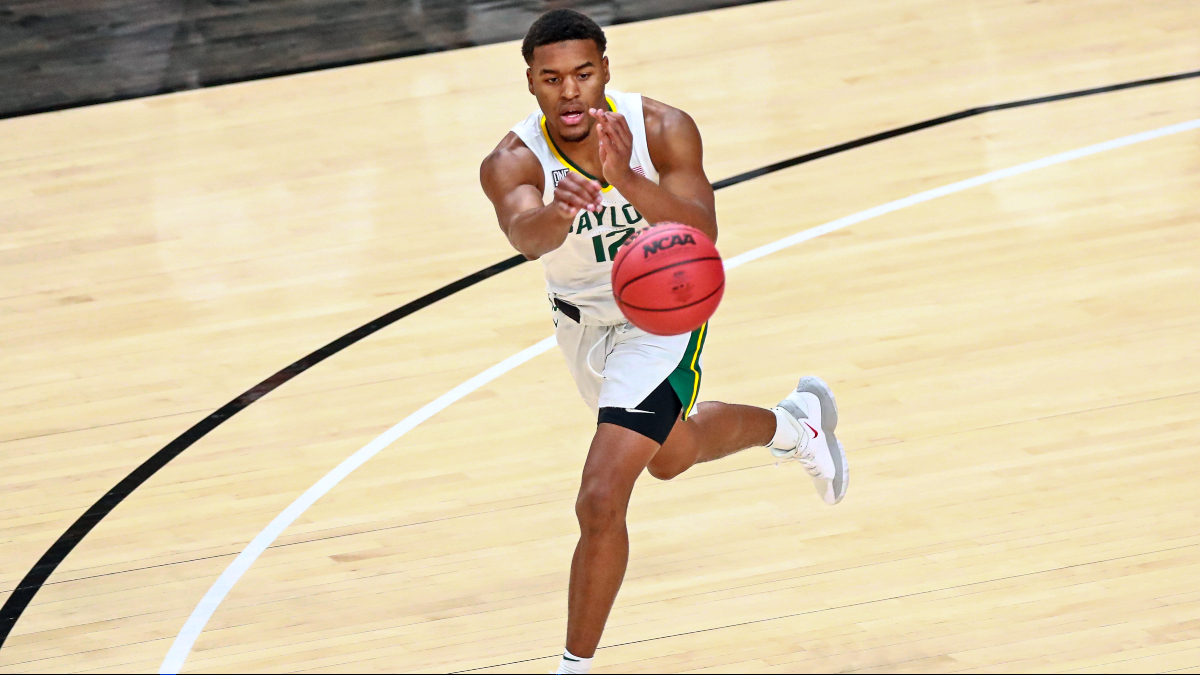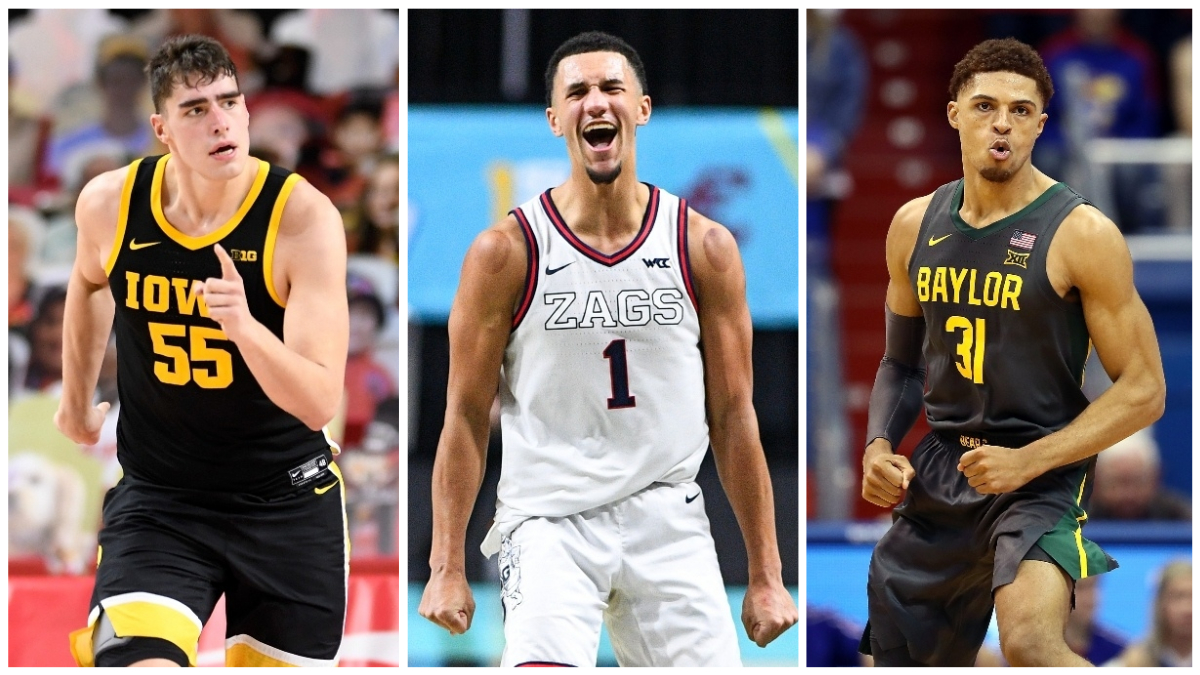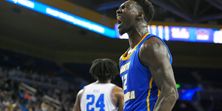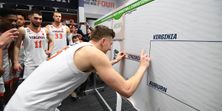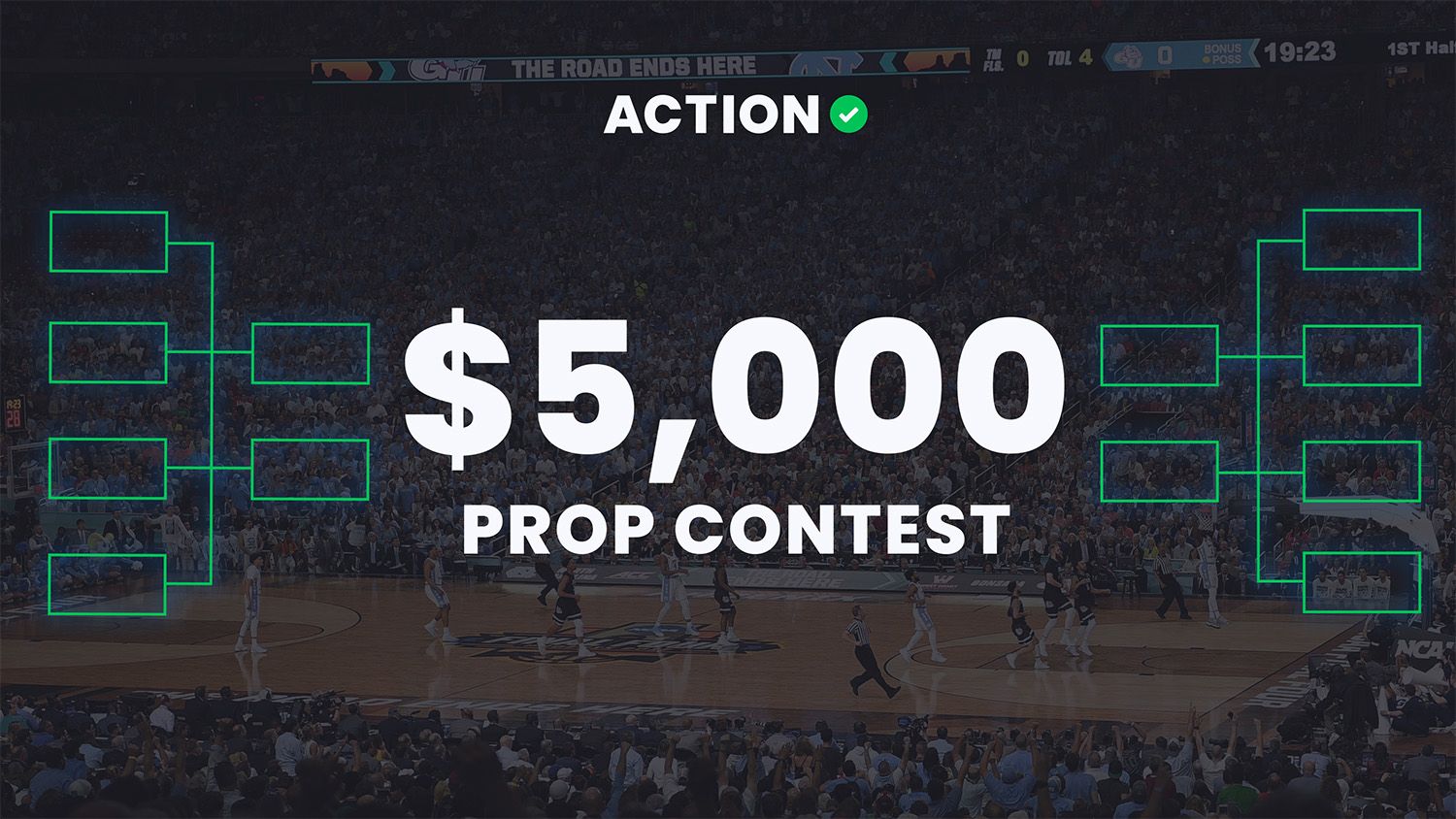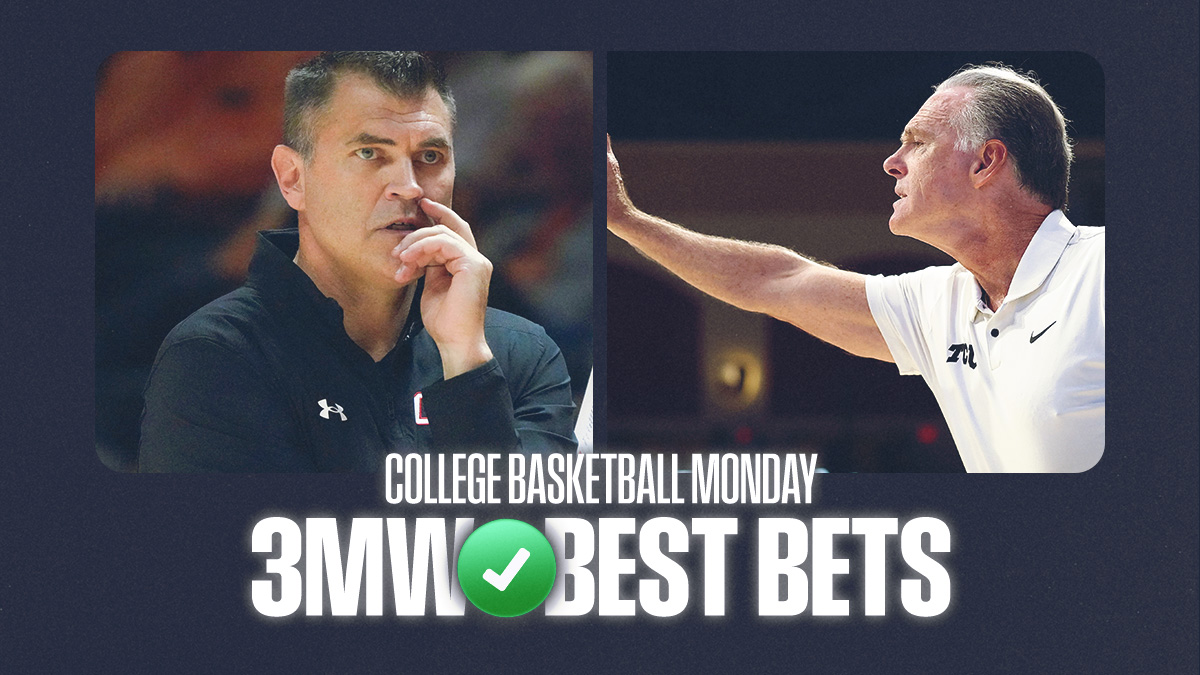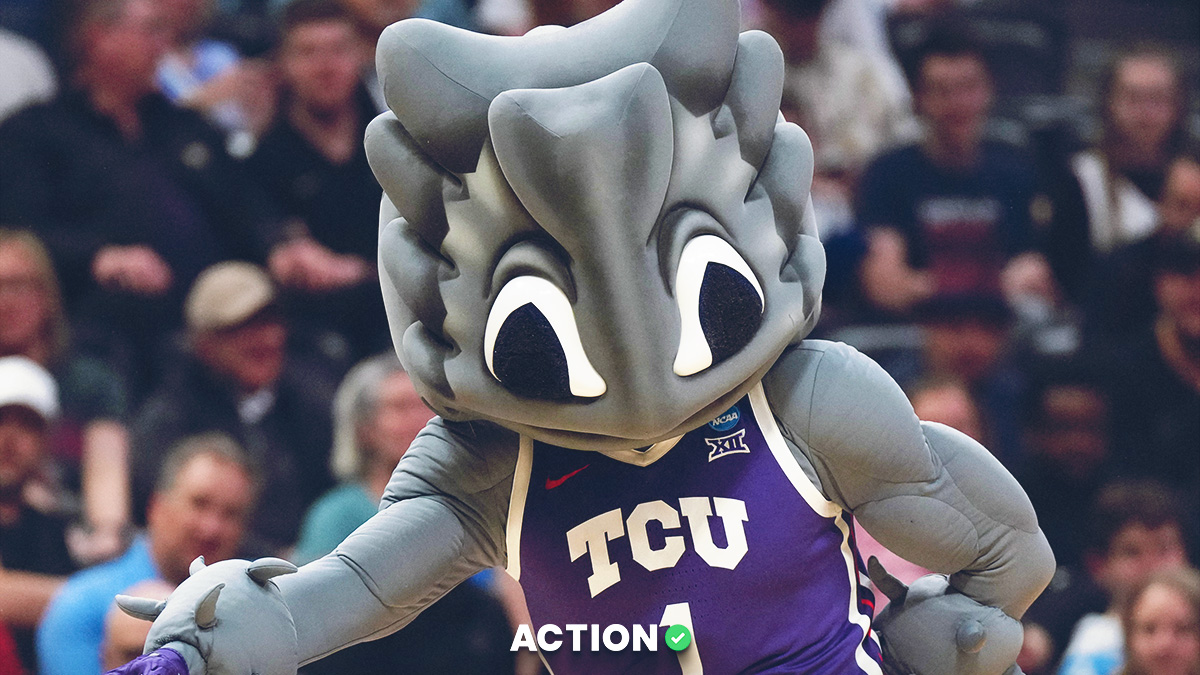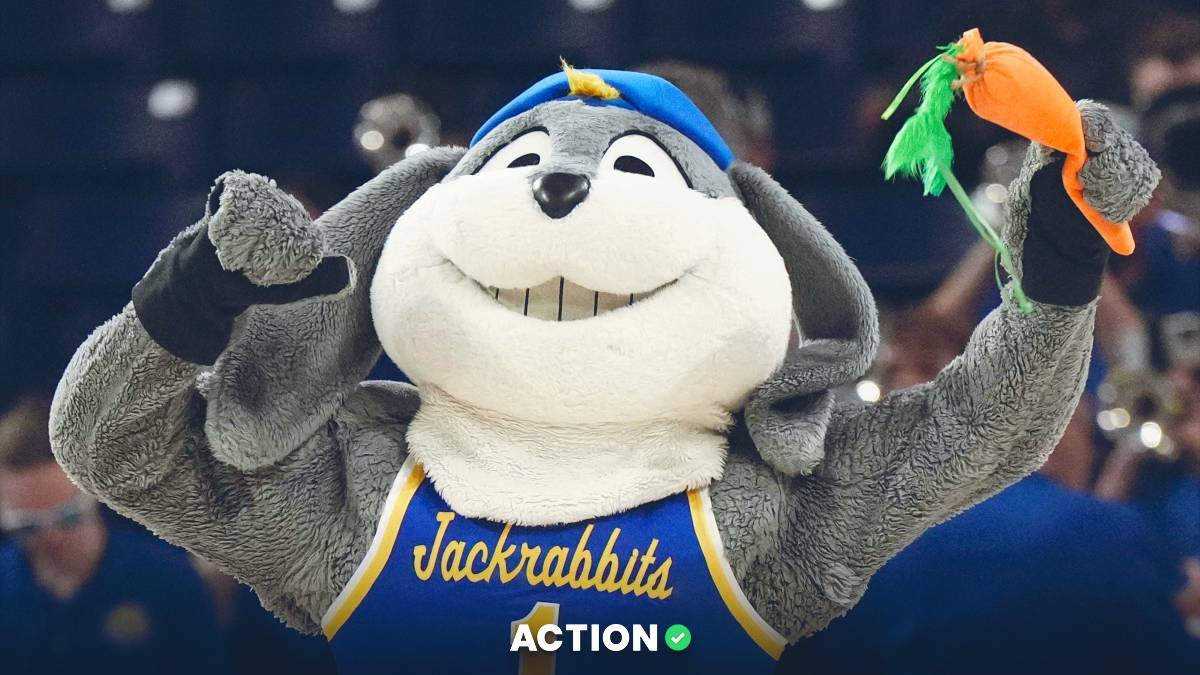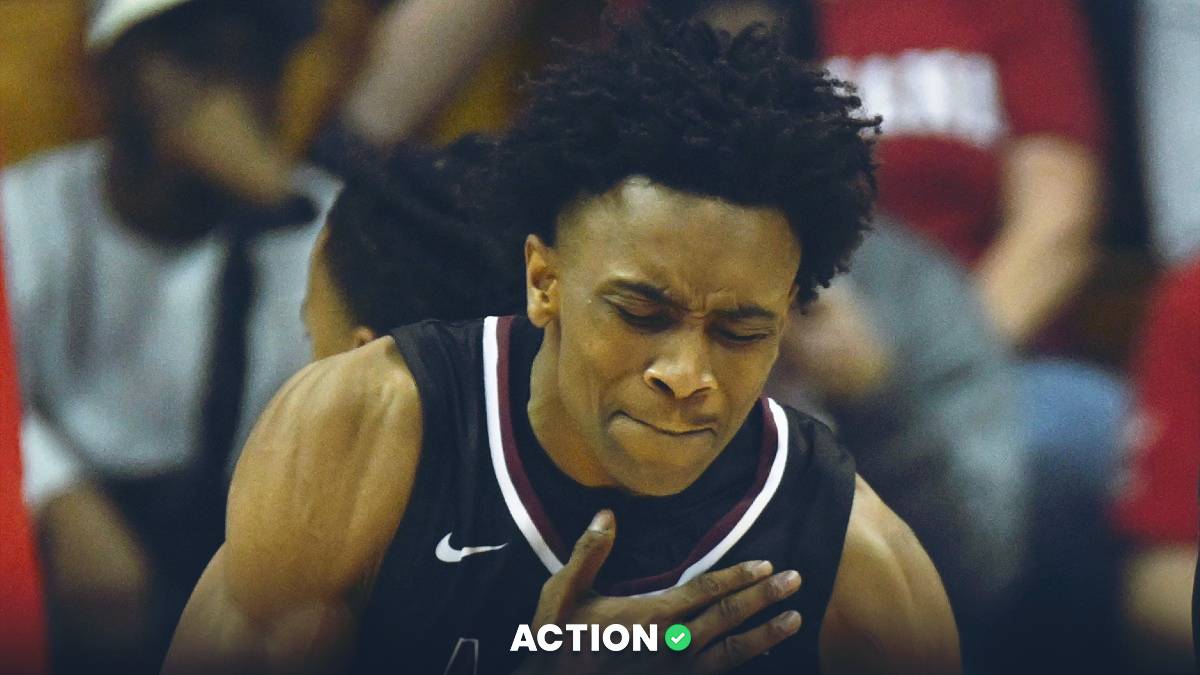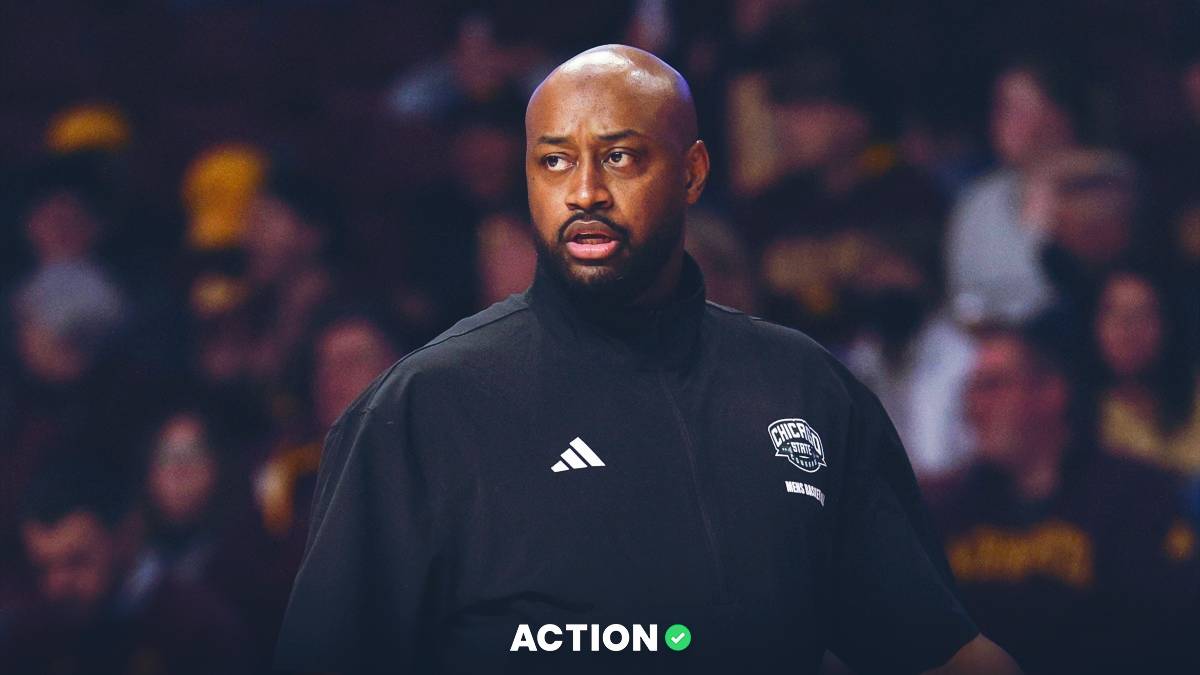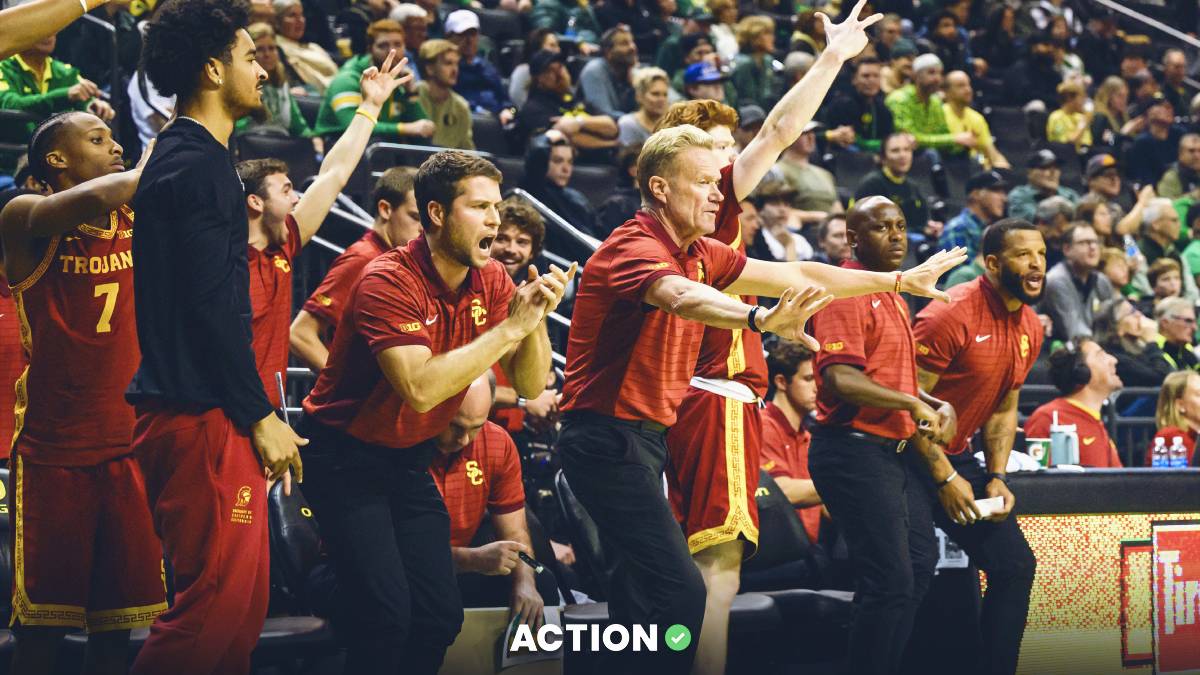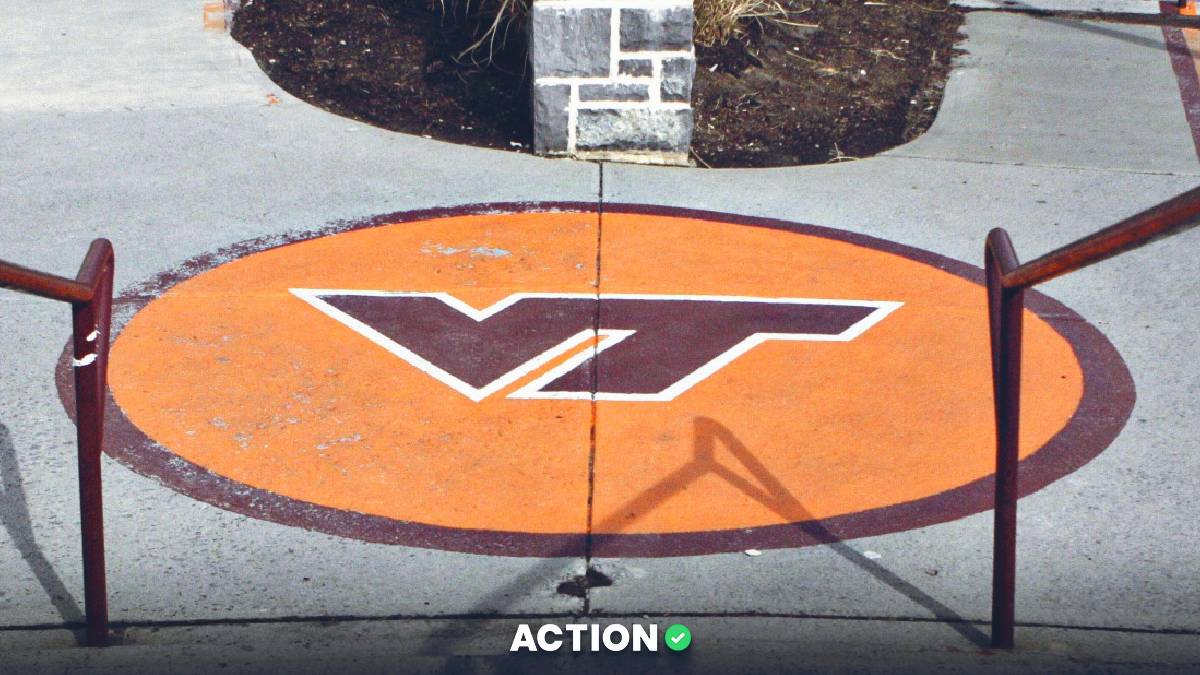The no-middle defense is an incredibly dangerous defensive scheme when used correctly with the right personnel. It has a rich history under Texas Tech’s Chris Beard, and Baylor’s Scott Drew has adapted it with incredible effectiveness.
However, Baylor’s defense is looking incredibly vulnerable heading into the NCAA Tournament. The Bears have still claimed a No. 1 seed and are widely regarded as the second-best team in the country, but it’s mostly on the back of an explosive offense.
Given that Baylor’s offense is so explosive and often impossible to guard, any team that hopes to defeat the Bears is going to have to score.
But Baylor still employs the no-middle concept to a relatively effective degree. Therefore, I want to examine what a no-middle defense is, which types of offenses perform well against it and the offenses in Baylor’s draw that could potentially exploit it.
All in the hopes of finding value in beating Baylor.
What is the No-Middle Defense?
At its absolute core, the no-middle defense is designed to force opposing players to drive towards the sideline and baseline rather than towards the middle.
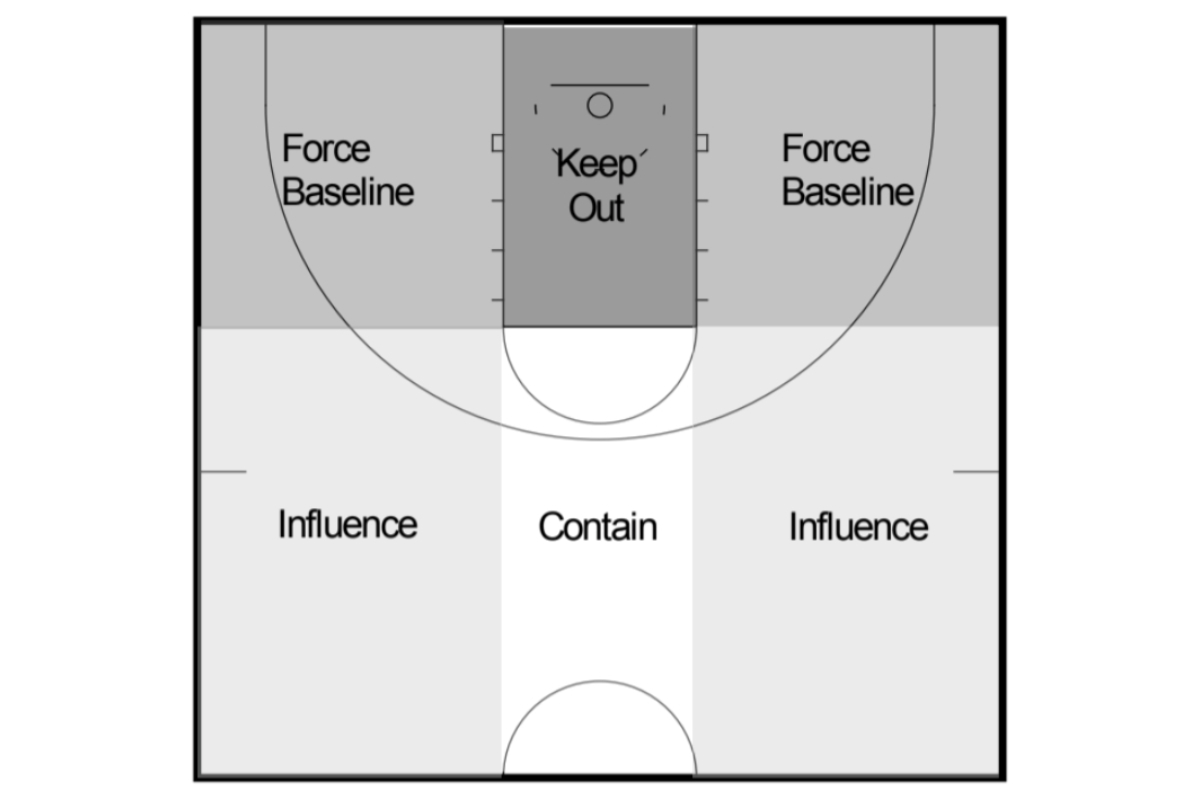
The on-ball defender squares up directly to the outside and forces the ball handler to drive outside and toward the baseline.
As the ball handler drives that way, the help comes immediately from the defender closest to the baseline. The help can come early and outside the paint because the defenders know where the ball is going.
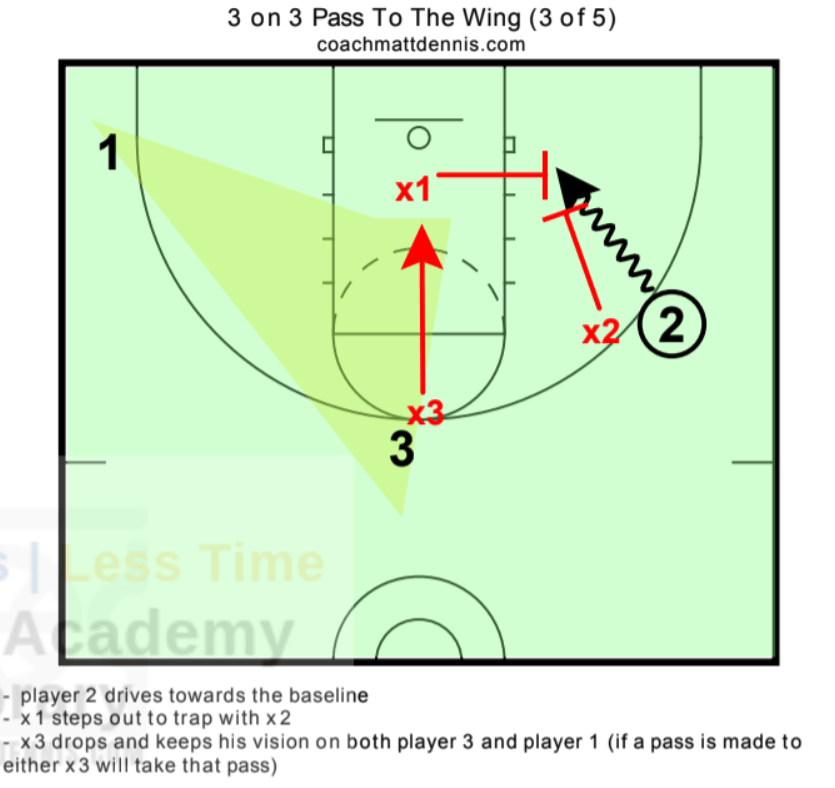
The overall goal is to use the sideline and baseline as an extra defender while keeping opposing offenses out of the paint at all costs.
Off the ball, the weak-side defenders zone up. Their primary responsibilities include being active in the passing lanes and rotating with aggression when shooters become open.
Finally, the Baylor no-middle defense attacks ball screens in two ways. First, it will often ice ball screens (especially ones close to the sideline) and force offensive players to reject the screen. Otherwise, the Baylor defenders switch everything and switch everything aggressively.
Overall, it’s a chaotic scheme requiring versatility, athleticism and aggression. With all the switching and scrambling, it can look absolutely bonkers at times.
But when the scheme is working how it’s designed to, it’s incredibly effective.
What the No-Middle Does
The no-middle concept is designed to leave very few offensive options outside of low-percentage baseline shots, dangerous skip-passes and late shot-clock isolation. Plus, by helping so early and outside the paint, it restricts opponents’ shot opportunities at the rim.
In fact, only 26.8% of Baylor’s opponents' shots come at the rim, per Hoop Math, which is eighth-least in the country.
Plus, the no-middle creates tons of opportunities for turnovers in the passing lanes. As long as the defensive players are rotating with aggression and keeping their hands active in the passing lanes, it’s easy to force deflections on skip-passes and kick-outs.
Baylor excels at this, which is why it’s third in the nation in turnover percentage.
The trade-off of the no-middle scheme is that it often leaves itself exposed to open perimeter shots. With so much scrambling often occurring on the weak side, someone is bound to be left with an unguarded jumper.
Now is the Time to Beat Baylor
It’s a great time to examine the holes in Baylor’s usually-elite defense because it’s not nearly as elite as it was last season.
The 2019-20 Bears finished fourth in defensive efficiency (88.1), while the 2020-21 Bears are currently 44th in that metric (93.0). It’s still second in the Big 12 in both defensive efficiency and points per game allowed, but it’s clear Baylor isn’t a top-five defense anymore.
Plus, in the seven games since the Bears came back from their COVID-19 layoff, Baylor is just 180th in defensive efficiency, per Torvik, and the defense is allowing a whopping 1.09 points per possession.
So, what’s changed?
The biggest issue is that teams are just shooting better against the Bears this season. Here are Baylor’s defensive shooting splits over the past two season:
So, are teams just shooting hot against the Bears this season?
I don’t think so. Per Hoop Math, Baylor’s percentage of unblocked shots have risen across the board from last season:
Plus, its defensive adjusted shot quality has risen from .88 last year to .94 this year, per ShotQuality.
Overall, the Bears seem to be contesting at a lower rate, which in turn leads to giving up better shots at a higher rate. Teams are taking advantage.
But is there any concrete reason for the drop in efficiency?
We Miss You, Freddie
My hypothesis is that, despite retaining Davion Mitchell and Mark Vital, the Bears are really missing Freddie Gillespie.
At 6-foot-9 and 245 pounds, Gillespie was one of the most versatile defenders in the country. Baylor played him as a small-ball center in its six most-used lineup combinations last season. Gillespie blocked 2.2 shots in 28.4 minutes per game and was named to the Big 12 All-Defensive team last season.
It’s important to reiterate just how versatile and athletic Gillespie was defensively.
He brought a great inside presence, could switch onto and defend every position with length and was excellent at closeouts on the perimeter. Essentially, Gillespie was a fever dream for Scott Drew.
With Gillespie gone, his minutes at the center position have been replaced through a combination of Jonathan Tchamwa Tchatchoua, Flo Thamba and Matthew Mayer. All three are serviceable, but none of them can switch as aggressively or close out as effectively as Gillespie could.
Plus, Baylor’s inside presence is worse as well. Baylor’s block percentage dropped to 10.3% after being at 12.7% last season, as the three centers combine for just 1.8 blocks per game.
Baylor just doesn’t have another big man like Gillespie who can switch on to and keep elusive guards and ball handlers in front of him while also contesting those shots with size and length.
That leaves Baylor vulnerable to, as Jordan Majewski writes on his website Staring at the Floorboards, “straight line drives from bigger, athletic ball handlers.” That's particularly true for the Bears’ top three guards, who are all great defenders but all shorter than 6-foot-4.
With Baylor’s new personnel, the rotations have been weaker, the interior has been more exploitable, and one-on-one matchups don’t favor the Bears as often.
The Recipe to Beat Baylor's No-Middle Defense
Overall, offenses have been more effective against Baylor’s defense this year than last year — which means it’s a perfect time to look into which kind of offenses excel against the no-middle concept.
There are a number of offensive ingredients that go into fully exploiting Baylor’s no-middle concept.
The defensive scheme leaves the 3-point line open a lot. Offenses should be comfortable shooting the 3, but more importantly, need to make a high percentage of outside shots. Taking advantage of open 3-point shots that Baylor can leave is the most important factor.
The key to getting those open perimeter shots is to force them through optimal spacing on the weak side. When an offensive player receives a skip pass, he wants the Baylor defender to travel the farthest possible distance to scramble and recover.
Moreover, the more teams work the ball around the perimeter, the more the Baylor defenders will have to rotate, scramble and recover. Better perimeter passing offenses will force more open looks.
However, one of the elements to Baylor’s no-middle defense is hoping those weak-side passes end up in a non-shooter's hands. Therefore, offenses will want as many high-level catch-and-shoot players on the roster as possible.
Finally — as mentioned above — big, athletic ball-handlers who can attack gaps and open spaces are important. If that player happens to be a guard who excels at finding open shooters, even better.
For example, think Oklahoma State’s Cade Cunningham, who destroyed Baylor in the Big 12 Tournament (25 points, five assists) by attacking the open spaces, beating up on the smaller guards and finding open teammates when the help came.
Even though Oklahoma State doesn’t shoot a ton of perimeter shots (48.9% of its shots come at the rim, fourth in the country, per Hoop-Math), Cunningham just physically abused the Gillespie-less Bears. Vital wasn’t enough to stop him.
So, with this in mind, which teams — in Baylor’s draw or in general — have the offensive capabilities to exploit Baylor’s no-middle defense?
Which Offenses Can Beat Baylor?
Alabama Crimson Tide
The first team that comes to mind is Alabama. Unfortunately, the Crimson Tide are not in Baylor’s region and the two wouldn’t meet until the final.
But Alabama’s offense has all the tools needed to exploit the no-middle scheme. The Crimson Tide take 47.1% of their shots from 3-point range, meaning they’re incredibly comfortable shooting the outside shot, and they make those attempts at a 35.1% clip.
Excluding Herb Jones, every one of Alabama’s top-seven rotation players takes at least three 3-pointers per game, and all of them shoot over 33% from deep. The Crimson Tide will happily space the floor, take a lot of deep shots, and there isn’t a player uncomfortable with shooting from the perimeter.
Finally, at 6-foot-8 at 210 pounds., Jones is a very capable ball-handler who will attack Baylor’s open spaces aggressively. Plus, he paces the Crimson Tide in assists at 3.4 per game, meaning he has no issue finding the open guy on the strong or weak side.
Illinois Fighting Illini
The Illini and Bears wouldn’t meet until the Final Four. But if both teams get there, I really love how the Illinois offense would match up with the Baylor defense.
Illinois and Baylor played earlier this season, and Baylor handled Illinois with ease. However, Illinois is playing some of its best basketball of the season, while Baylor is looking weaker than ever.
Brad Underwood runs a spread offense in which he puts four interchangeable players on the perimeter. It’s the perfect offensive scheme to exploit Baylor via optimal spacing on the weak side.
While Illinois doesn’t shoot a lot of perimeter shots, it’s very comfortable taking and making them. Illinois makes 37.6% of its shots from deep, good for 25th in the country. Plus, it features three solid perimeter shooters in Ayo Dosunmu, Trent Frazier and Adam Miller, who combine to make 4.8 3s on 13.2 attempts per game.
Additionally, all three of the Illini’s shooters are comfortable in catch-and-shoot situations, specifically Frazier and Miller. Of Illinois’ 3-pointers, 90.4% are assisted ones, ranking 17th in the nation.
Illinois shares the ball well thanks to its two elite passers, Dosunmu and Andre Curbelo. The two record a combined 9.3 assists per game and can easily exploit the Baylor defense by forcing rotations through ball movement.
Finally, Dosunmu is the perfect player to beat Baylor. He scores and records assists at such a high rate because he can score or pass from anywhere on the floor, meaning he can easily attack those gaps in the Baylor defense.
At 6-foot-5 and 200 pounds, he has the necessary size to exploit the smaller Baylor defenders.
Wisconsin Badgers
This is tough to defend, but the Badgers will likely play the Bears in the second round and are 15/2 to make the Sweet 16 on DraftKings.
The only way Wisconsin scores is from behind the arc. It takes 40.8% of its shots from 3 and makes them at a 35.5% clip, and 36.8% of the Badger’s total points come from deep (41st in the country).
The Badgers don’t have an alpha, and therefore, play all-around team basketball and just attempt to find an open player. Plus, four of Wisconsin’s five starters take at least 3.3 3-point attempts per game, and they all shoot better than 34% from deep.
If the Badgers beat North Carolina and hit the lottery from downtown in the second round, it could manage to outscore Baylor.
Of course, the Badgers also lack the necessary size in the backcourt to challenge Baylor’s elite guards. The Badgers would have to make an NCAA Tournament record amount of 3-pointers.
Winthrop Eagles
Winthrop is very intriguing. If it could upset a shorthanded Villanova team and then sneak past Purdue in the second round, it’d meet Baylor in the Sweet 16.
Winthrop is very comfortable taking and making perimeter shots. It takes almost 40% of its shots from 3-point range and makes 35.3% of them.
Plus, the Eagles share the ball well on the perimeter. Of Winthrop’s 3-pointers, 88.7% are assisted on, which ranks 40th in the country.
However, Winthrop’s X-factor is Chandler Vaudrin. The Big South Player of the Year averaged 12.2 points and 6.9 assists per game this season, and he finished ninth in the country in assist rate for a Winthrop team that took 24 3-pointers a game this season.
Vaudrin is a player I’d look to exploit Baylor’s defense because he combines his great vision with size and mobility. He’s 6-foot-7, 210 pounds and runs the point for a team that finished 11th in adjusted tempo this season.
Vaudrin is exactly the type of player who could attack Baylor’s smaller guards with his size while making the necessary passes to open, spaced-out shooters.
At the time of this writing, Winthrop is 30/1 to make the Sweet 16 (DraftKings) and 100/1 to make the Final Four (FanDuel). After the Eagles take down Baylor, it’s easy to hedge that ticket in the Elite Eight against Arkansas or Ohio State, against whom they don’t match up well.
Colgate Raiders
Colgate is another intriguing longshot case, although with a much more difficult road to meet up with Baylor. The Raiders shoot over 40% from 3 while taking 22.5 per game.
However, Colgate lacks size (four starting players under 6-foot-6) and a low percentage of its perimeter shots are assisted on. Its main scorer and facilitator, Jordan Burns, is just 6-foot and would probably get eaten alive by the Baylor guards on baseline drives.
But the Raiders can score and they can score a lot from deep, and Colgate’s odds to make the Final Four are 60/1 on FanDuel.


